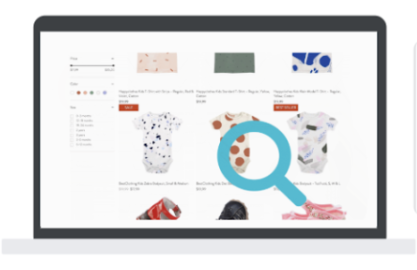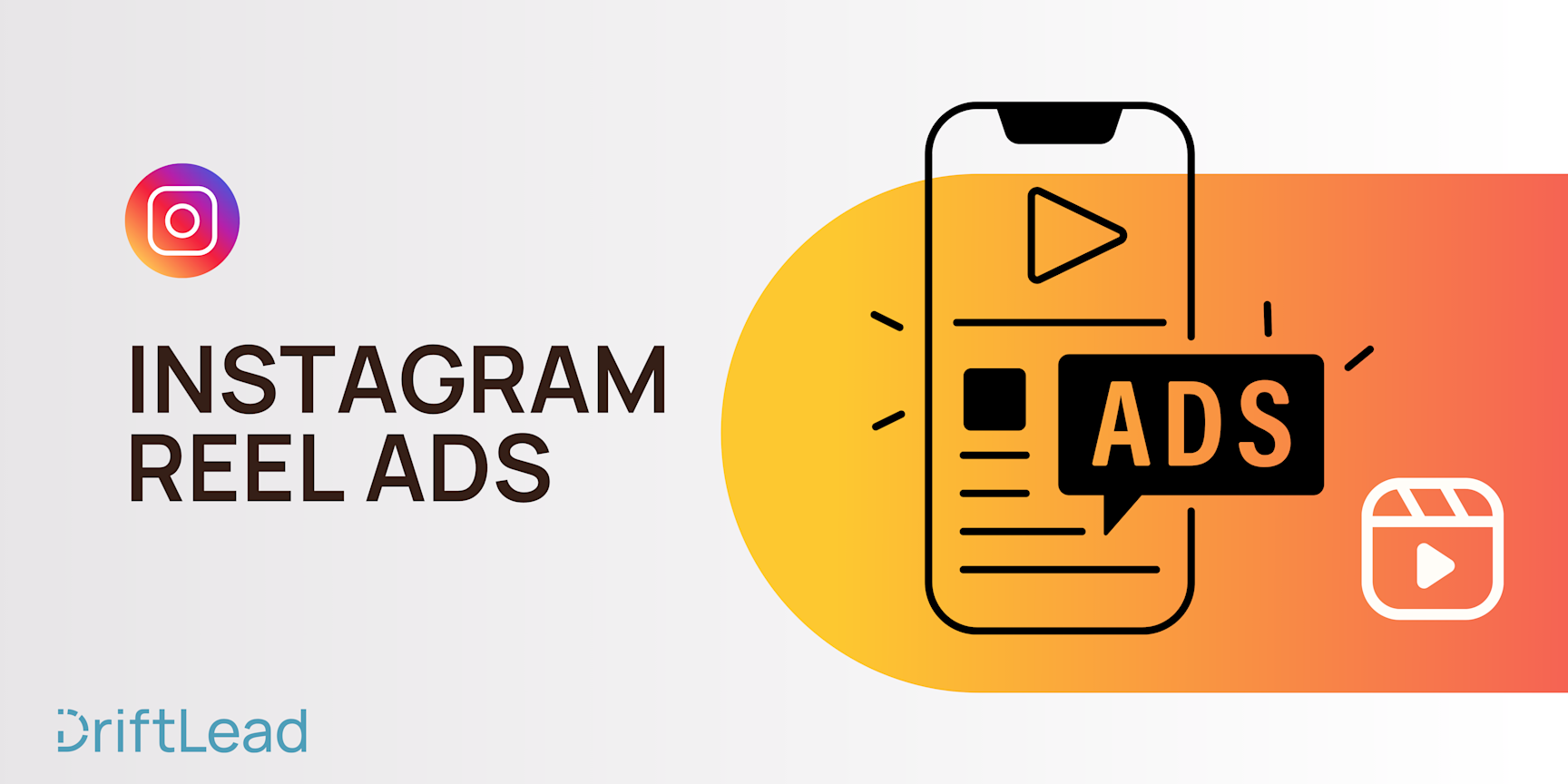Dynamic Search Ads: What They Are and How to Use Them
08 Sep, 2023
Uncover the ins and outs of Dynamic Search Ads in our comprehensive guide. Learn how to automate your PPC campaigns, optimize for success, and sidestep common pitfalls. Ready to level up your advertising game?

Jump to:
Hop on our weekly newsletter train! We're sharing tips so stellar, we're practically job-threatening ourselves!
You've got your keywords. You've penned the perfect ad copy. You've even meticulously designed your landing pages. And yet, somehow, you're still missing out on valuable traffic. What's the missing puzzle piece? How about Dyanmic Search Ads?
Imagine if Sherlock Holmes and a chameleon had a digital baby; it would be Dynamic Search Ads. In this article, we'll pull back the curtain on this underutilized Google Ads feature and show you how to make it work wonders for your business. From cutting down the hours spent on campaign management to honing in on those elusive customers, we've got you covered.🫵
However, with great power, comes great responsibility. Dynamic ads don't come without their faults and cautions. But fear not because by the end, you'll be armed with the knowledge to revolutionize your ad campaigns.
Setting the Stage: Traditional Search Ads 🔍
Before we talk about the new sheriff in town—Dynamic Search Ads—let's take a quick trip down memory lane. In the traditional PPC galaxy, you'd assemble a list of keywords and pair them with finely crafted ad copy. The game was simple: bid high, rank high. You played the numbers, fine-tuned your strategy, and reaped the rewards or faced the consequences. But the drawback? It's time-consuming and requires constant attention, kind of like a Tamagotchi pet from the '90s. 🐛
Unveiling Dynamic Search Ads 🥁
Imagine having a self-driving car. It's futuristic, efficient, and offers an incredible amount of convenience. You just set your destination, sit back, and let the car do its thing. Sounds nice, right? Well, this is pretty much what Dynamic Search Ads do for your PPC campaigns. Just as a self-driving car navigates the roads using a host of sensors and algorithms, they navigate the digital landscape by automating your keyword and ad process.
The result? A significant load off your plate. Forget the hassle of manually creating keyword lists, crafting multiple ad copies, or spending endless hours on A/B testing. DSAs scan your website, identify the perfect opportunities, and match them with relevant search queries. It's like Netflix just knowing you'd be into "Stranger Things" without you scrolling through a zillion options first.
However, it's not all rainbows and unicorns. Just like self-driving cars, which come with their own set of complexities and safety concerns, DSAs aren't without their drawbacks. For one, they require a well-structured website and might not be the best fit for every type of business. Plus, if not set up properly, they can lead to some less-than-ideal ad placements. 🧐
So, as we dive into the intricacies of Dynamic Search Ads, we'll look at both the glowing benefits and the cautionary tales.
The Mechanics: How Dynamic Search Ads Work ⚙️
If you've ever set up a search campaign manually (especially if you're using manual bidding), you know it's a fairly tedious process. Dynamic Search Ads, however, flips this concept on its head.
DSAs function by utilizing Google's machine learning algorithms to scan your website and automatically generate ads for specific, relevant search queries. To put it simply, Google does the hard thinking for you, and you get more time to sip your morning latte. ☕
Here's a brief rundown of how they work:
Website Scanning: First off, the DSA algorithm scans your website's content. It's like Google doing homework for you and ensuring it knows your website like the back of its hand.
Keyword Matching: The algorithm identifies what search queries would be most relevant to your website's content. Think of this as the algorithm playing matchmaker, setting you up on the ideal blind date with a search query.
Ad Creation: Based on what it finds, the system automatically generates a headline and pairs it with a description and landing page from your website.
Ad Placement: The ad is then entered into the Google Ads auction, where it competes for placement just like manually created ads.
It's important to note that you're still in control of your ad budget, targeting settings, and can apply negative keywords to guide your DSAs in the right direction. You know, so it doesn't turn into an episode of "Black Mirror" where the algorithm takes over your entire marketing campaign.
So, with fewer nuts and bolts to personally tighten, DSAs bring efficiency to your advertising efforts. But keep in mind that efficiency doesn't always equate to effectiveness if you're not careful.
Intrigued? Let's explore further why DSAs might be the game-changing strategy your PPC campaign has been waiting for—or why they might give you more trouble than they're worth.
The Allure of Automation: Top Benefits ⭐
Dynamic Search Ads are not just a shiny new toy in your marketing toolkit; they have solid advantages that could make even the most skeptical marketer turn their head. Here's why they're something to consider:
Time-Saving: Crafting the perfect PPC campaign can feel like trying to land a triple axel in figure skating. DSAs, however, take away a huge chunk of that time commitment by automating ad creation and keyword matching. With DSAs, it's as if you have your own Tony Hawk executing the kickflips and 900s for you.
Improved Relevance: Remember when Dorothy realized she wasn't in Kansas anymore? That's how users feel when they click on an irrelevant ad. DSAs ensure better user experience by aligning closely with search queries, making sure users find exactly what they're looking for.
Highly Scalable: If your website has a gazillion pages, fret not. DSAs can handle it. They are the powerlifters of the ad world, easily scalable to fit websites of varying sizes and complexities. 🏋️
Lower Cost-Per-Click: DSAs usually have a lower average CPC compared to traditional campaigns. They're like shopping at a high-quality thrift store—you get more bang for your buck. But Google may spend all of your budget...even when the search quality is lacking.
Dynamic Nature: Trends and user behavior change faster than a TikTok video going viral. DSAs adapt quickly to these shifts, automatically updating to stay in line with your current website content.
But before you jump into the DSA pool with both feet, let's toss in a life preserver of caution. Yes, DSAs can be revolutionary, but they're not without their own set of drawbacks. So let's navigate those waters carefully, shall we?
The Flipside: Key Cautions and Downsides 👎
The allure of Dynamic Search Ads is undeniable, but it's not all sunshine and rainbows. Here are some of the gray clouds you might want to consider:
Less Control: If you're a control freak like Monica Geller in her kitchen, you might struggle with DSAs. You give up a level of control over which keywords trigger your ads, and for some, that might feel like you've given the steering wheel to your hyperactive dog. 🐕
Quality Risks: Automation is smart, but it's not a Nobel Laureate. There are times when the system might match your ads with queries that aren't quite spot-on. It's like ordering a mystery box; you don't always know what you're going to get.
Algorithm Learning Curve: The AI behind DSAs needs time to learn and optimize. If you're expecting instant results, you might end up disappointed, like waiting for the next season of your favorite show, only to find out it's been canceled.
Ad Copy Limitations: Unlike traditional PPC ads, where you can craft each word with the precision of a sushi chef, DSAs generate the headline and final URL for you. This means you're sometimes left with generic messages that might lack your brand's unique voice or flair...and on some occasions, text that just doesn't make sense.
Budget Drain: If not monitored carefully, Dynamic Search Ads (like many automated bidding strategies) can and will quickly consume your advertising budget. The ads might trigger a broader set of terms than you intended, and you could find your budget vanishing like a magician's assistant. While this offers more exposure, it doesn't guarantee that the exposure is meaningful or converting.
So now you've got a fuller picture. Dynamic Search Ads can be a double-edged sword: extremely effective in the right hands but potentially problematic if not wielded carefully.
Pro Tips: Maximizing Dynamic Search Ads 🛠️
Let's dive into some seasoned advice for optimizing your Dynamic Search Ads (DSAs).
Target Setting: Be as specific as you can when setting your dynamic ad targets. The more granular you are, the better your chances of hitting the bullseye. Think of it like setting up a fantasy football league; the more you know about the teams and players, the better your line-up will be.
Negative Keywords: Just as you'd "mute" an annoying song on Spotify, you'll want to exclude irrelevant search queries by adding negative keywords. This way, your ads are not displayed for unrelated or low-converting searches.
Regular Monitoring: Keep an eye on the Search Query Report to understand what queries triggered your ad. This helps you tweak the negatives and adjust targeting. It's like checking your GPS during a road trip; you don’t want to discover you’re off-course when it's too late!
Quality Landing Pages: DSAs take users to what the algorithm believes is the most relevant page on your site. Make sure all possible landing pages are optimized for conversions. Remember, a great landing page is like a memorable first date; it might just make someone commit.
Budget and Bid Strategy: Use a conservative budget and bid strategy initially until you gather enough data to understand performance. Then you can adjust your strategy, just like adding spices to a dish; start with less and add more as needed.
Performance Metrics: Keep track of key performance indicators like click-through rates, conversion rates, and cost-per-acquisition. These metrics are the 'health vitals' for your DSAs, letting you know if you're thriving or just surviving.
Use In Tandem with Other Campaign Types: Don't put all your eggs in one basket. Use DSAs in conjunction with other types of PPC campaigns for a balanced and robust advertising strategy.
Common Mistakes and How to Dodge Them 🚫
Let's talk about some of the common pitfalls people encounter with Dynamic Search Ads (DSAs) and how you can gracefully sidestep them.
Broad Targeting: One of the biggest mistakes is setting your targets too broadly. This can lead to irrelevant clicks and wasted ad spend. So, unless you want to go broke faster than a gambler in Vegas, refine your targeting settings.
Ignoring Negative Keywords: Skipping the negative keywords is akin to skipping the gym; both will lead to poor results. Regularly update your list of negative keywords to prevent your ad from showing up in unrelated or low-quality searches.
Lackluster Landing Pages: DSAs will auto-select a landing page from your website based on the search query. If your website has weak or irrelevant landing pages, conversions will suffer. Imagine being promised a gourmet meal and getting fast food instead; disappointing, right?
No Regular Monitoring: This isn't your grandma's rice cooker where you can just "set it and forget it." Failing to regularly monitor performance metrics could leave you in the dark about how well (or poorly) your campaign is doing.
Making Hasty Changes: DSAs, like fine wine, often need time to deliver the best results. Changing your settings too frequently doesn’t give the algorithm time to learn and optimize. Patience, young grasshopper.
Running DSAs Without Enough Historical Data: Without sufficient historical data, your DSAs will lack the insights needed to effectively automate the ad process. Think of it as trying to solve a jigsaw puzzle with half the pieces missing. You're going to have a hard time seeing the full picture.
Ignoring Mobile Optimization: In today's world, mobile compatibility isn't optional; it's a necessity. Failing to optimize for mobile is like trying to ride a bicycle without wheels—you won't get far.
By being aware of these common mistakes and knowing how to avoid them, you're already ahead of the game.
FAQs: Debunking Myths & Concerns 🤓
Let's clear the fog and shed some light on the most pressing questions and misconceptions about Dynamic Search Ads.
Do DSAs Replace the Need for Standard Search Ads?: No, think of DSAs as your friendly neighborhood Spider-Man, swinging in to help, but not to replace the police force (standard ads). They are most effective when used in tandem with standard search ads, giving you a comprehensive approach to your PPC strategy.
Will DSAs Mess Up My SEO?: Nah, that's like worrying that eating an apple will mess up your chocolate cake recipe. SEO and PPC are two different beasts. DSAs target paid search, while SEO focuses on organic search; they operate in different lanes.
Are DSAs too Expensive?: Not necessarily. The cost depends on various factors such as targeting settings, bidding strategy, and competition. With precise targeting and regular optimization, DSAs can offer good ROI. Remember, you get what you pay for. Don't expect champagne results on a beer budget.
Do DSAs Write Poor Ad Copies?: They're automated, not illiterate. DSAs generally do a good job of matching ads to relevant queries. However, they're not J.K. Rowling; so don't expect poetic prose. You should still keep an eye on the ad copies and make tweaks when needed.
Are DSAs Too Complex for Small Businesses?: That's like saying smartphones are too complex for kids. These days, even kids can teach us a thing or two about technology. Similarly, DSAs can benefit businesses of all sizes. You don't need to be a Fortune 500 company to harness their power.
Can I Control Where DSAs Appear?: To an extent, yes. With appropriate targeting settings and a well-curated list of negative keywords, you can exert a decent level of control over where your DSAs show up. You won't be the puppet master, but you'll have some strings to pull.
Are DSAs Ineffective for Niche Markets?: Not true. DSAs can be tailored to suit the unique needs and challenges of a niche market. The key lies in meticulous targeting and ongoing optimization. If anything, DSAs can help you discover untapped potential in your specific niche.
There you have it, folks—the FAQs about DSAs, answered, debunked, and demystified. Knowledge is power, and now you're armed to the teeth. 🤓
Conclusion
Alright, let's bring this ride to a screeching but satisfying halt. . With their ability to automate, target, and optimize, DSAs can be the nitrous boost your marketing engine has been yearning for. Sure, they're not without their caveats—think of them like the Iron Man suit: powerful but requiring expertise and caution.
Now, if you've navigated through this DSA odyssey and find yourself thinking, "This is cool, but I'd rather leave it to the pros," then hey, we've got you covered. Whether you're a rookie in the PPC league or a seasoned veteran looking to elevate your game, DriftLead is here to help you slam-dunk your marketing goals.
Ready to jump into the DSA game but don't want to go it alone? Click here to get a free marketing plan from DriftLead.
And there you have it! Your roadmap to navigating the dynamically changing landscape of search advertising. Now go forth and be dynamic! 🚀






